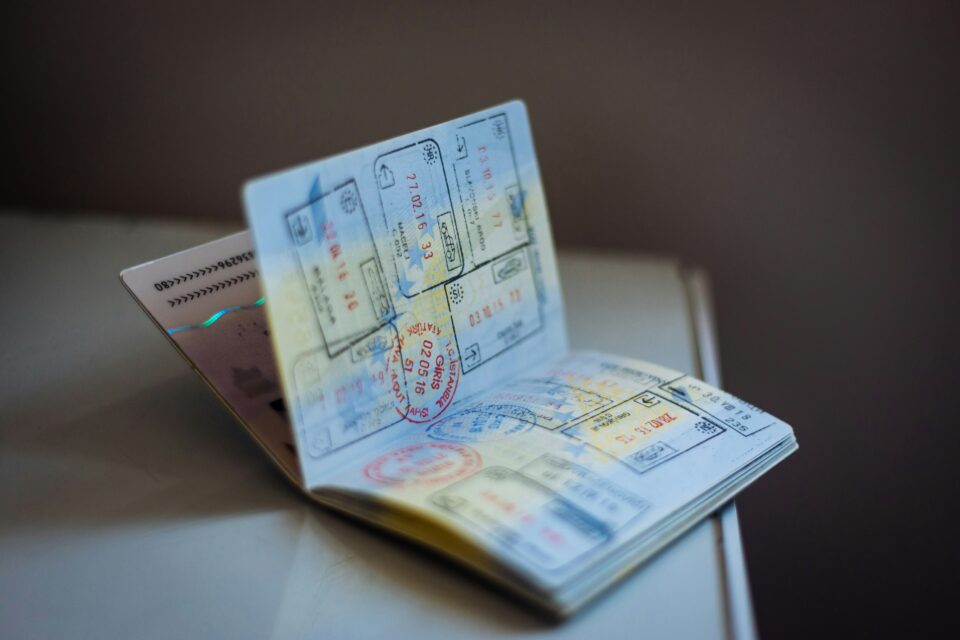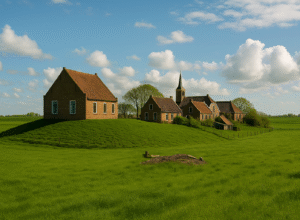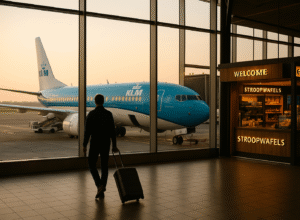The Partnership Dutch People Forgot They Have
You know that feeling when you discover an old gym membership still auto-renewing on your credit card? That’s basically Benelux for many Dutch people today. This 70-year-old partnership between Belgium, the Netherlands, and Luxembourg still technically exists, still has offices, still holds meetings… and most Dutch citizens would struggle to tell you what it actually does.
Ask an American about European alliances, and they’ll likely mention NATO or the EU. Ask them about Benelux, and you’ll probably get a blank stare. Ask a Dutch person about Benelux, and you might get the same reaction—which is precisely what makes this “forgotten partnership” so fascinating.
Benelux Fast Facts
- Founded: 1944 (customs union), 1958 (formal treaty)
- Members: Belgium, Netherlands, Luxembourg (Be-Ne-Lux)
- Budget: €20 million/year
- HQ: Brussels
- Main focus: cross-border cooperation, pilot EU projects, cultural ties
The EU Before the EU (And a Complicated Family History)
Here’s the plot twist: Benelux wasn’t always irrelevant. When Belgium, the Netherlands, and Luxembourg signed their customs union agreement in 1944 (yes, during World War II), they were pioneering something revolutionary. These three small countries, still partially under Nazi occupation, were already planning for a post-war world of open borders and economic cooperation.
But this wasn’t just a marriage of convenience—it was more like a family reunion with some awkward history. Until 1830, Belgium was part of the United Kingdom of the Netherlands, and the split wasn’t exactly amicable. The Belgian Revolution was partly about Catholic Belgians rejecting Protestant Dutch rule, and partly about economic grievances. Imagine a messy divorce where the kids (in this case, entire regions) chose sides.
Then there’s the language connection: about 60% of Belgians speak Dutch (or Flemish, as they prefer to call their variant), making the Netherlands and Flanders linguistic siblings who sometimes squabble over pronunciation and vocabulary. The Walloon (French-speaking) part of Belgium adds another layer of complexity—they’re like the in-laws at this family gathering.
Luxembourg? They’re the wealthy cousin everyone forgot was related. Historically, Luxembourg was part of the Netherlands until 1890, when a quirk of inheritance law split them apart. Today’s Luxembourgers speak their own language (Luxembourgish), plus French and German, making them the polyglot relatives who can talk to everyone at the reunion.
By 1948, when the customs union went into effect, goods flowed freely between the three nations—no tariffs, no border checks for commerce. This was groundbreaking stuff. If you were an American business owner in 1950 trying to sell products in Europe, Benelux was your dream market: one set of rules for three countries.
The partnership was so successful that when European leaders were brainstorming broader cooperation in the 1950s, they essentially looked at Benelux and said, “Let’s do that, but bigger.” The 1957 Treaty of Rome, which created the European Economic Community (predecessor to the EU), borrowed heavily from the Benelux model.
When Success Becomes Obsolescence
Here’s where Dutch pragmatism kicks in. Once the European Economic Community expanded the Benelux concepts to include France, Germany, and Italy, you might expect the three countries to formally dissolve their smaller union. But they didn’t. Why fix what isn’t broken? Or more accurately: why formally end something that’s not actively causing problems?
The cultural undertones make this persistence even more interesting. For the Netherlands, Benelux represents a way to maintain ties with Flanders (the Dutch-speaking part of Belgium) without appearing to meddle in Belgian internal politics. For Belgium, it’s a forum where both Flemish and Walloon interests can be represented internationally. For Luxembourg, it’s a connection to its historical roots while maintaining its distinct identity.
There’s also an element of small country solidarity. All three nations know what it’s like to be overshadowed by larger neighbors (France and Germany), and Benelux gives them a slightly louder voice together than they’d have separately. It’s like siblings who fought growing up but band together when facing the outside world.
Today, Benelux exists in a peculiar state. It has:
- A Secretary-General (yes, really)
- A headquarters in Brussels (with actual employees)
- A Parliament that meets four times per year
- An annual budget of about €20 million
Yet most Dutch people would struggle to name a single thing Benelux has done recently. When I asked locals in The Hague about it, responses ranged from “Is that still a thing?” to “Something about cooperation with Belgium, right?”
What Benelux Actually Does Now
Despite its ghost-like presence in public consciousness, Benelux does maintain some functions:
Cross-border practicalities: The partnership smooths out details that the EU doesn’t bother with. Think police cooperation for car chases that cross from Rotterdam into Antwerp, or coordinated ambulance services near the borders. This is especially important given that many people live in one country and work in another—a legacy of those historical and linguistic ties.
Language and cultural bridge-building: While you might think the shared Dutch language between the Netherlands and Flanders would make cooperation automatic, there are surprising differences. Benelux provides a forum for standardizing everything from traffic signs to educational terminology. It’s like having translators for two versions of English—American and British—except the differences can be even more pronounced.
Testing ground for EU policies: Sometimes it’s easier to pilot new EU initiatives in just three countries first. Benelux served as a proving ground for the Schengen Agreement before it went EU-wide.
Educational cooperation: Your Dutch university degree is automatically recognized in Belgium and Luxembourg, sometimes with less paperwork than EU-wide recognition requires. This matters more than you might think, given the linguistic connections—many Flemish students study in the Netherlands and vice versa.
Cultural exchanges: Joint cultural programs and youth exchanges continue, though many participants don’t realize they’re experiencing “Benelux cooperation.” These programs often focus on understanding each other’s versions of shared history—because the same historical events can be taught very differently in Dutch versus Belgian schools.
The American Perspective: Why Should You Care?
If you’re planning to visit or move to the Netherlands, Benelux probably won’t impact your daily life much, if at all. But understanding it offers valuable insights into Dutch culture and European cooperation:
- Dutch Practicality in Action: The fact that Benelux continues existing despite its diminished relevance perfectly captures Dutch pragmatism. It’s not hurting anyone, it occasionally proves useful, so why make a fuss about ending it?
- European Layers of Cooperation: For Americans used to federal-state relationships, Europe’s overlapping circles of cooperation (city, province, country, Benelux, EU) can seem bewildering. Benelux represents one of these often-invisible layers.
- Small Country Strategies: Benelux shows how smaller nations can punch above their weight through cooperation. Combined, the three countries have significant economic and political influence.
What This Means for Travelers
Practically speaking, Benelux’s “invisible integration” means:
- Trains between Amsterdam, Brussels, and Luxembourg City run seamlessly
- No one will bat an eye if you day-trip between the three countries
- Some festivals and cultural events span all three nations
- Your rental car from Schiphol Airport works just as well in Bruges or Luxembourg City
The Future of a Forgotten Partnership
Recent years have seen modest attempts to make Benelux more relevant. Climate change cooperation, cross-border healthcare, and digital innovation initiatives have been launched under the Benelux banner. Whether these efforts will raise its profile or simply add to the list of things it quietly does in the background remains to be seen.
The cultural ties add an interesting dimension to Benelux’s future. As Belgium grapples with tensions between its Flemish and Walloon regions, Benelux provides a neutral space where both communities can cooperate internationally. Some Flemish politicians have even floated ideas of closer ties with the Netherlands, though this remains politically sensitive—nobody wants to be accused of trying to reunite the old United Kingdom of the Netherlands.
There’s something endearingly Dutch about maintaining a 70-year-old partnership that most citizens have forgotten exists. It embodies the Dutch approach to many things: if it’s not actively broken, if it occasionally proves useful, and if it doesn’t cost too much to maintain, then why not just let it continue? But it also reflects a deeper cultural pragmatism: maintaining family ties even after the family has grown apart, because you never know when you might need each other.
For Americans interested in European cooperation, Benelux offers a fascinating case study. It’s the partnership that succeeded so well it made itself obsolete, yet continues existing in the shadows—a testament to both European integration and Dutch practicality.
Next time you’re zipping between Amsterdam and Brussels on a high-speed train, you’re experiencing the legacy of Benelux, even if no one mentions it. Sometimes the most successful partnerships are the ones that become so seamless, so integrated into daily life, that people forget they exist at all.
Perhaps that’s not failure—perhaps that’s the ultimate success.







